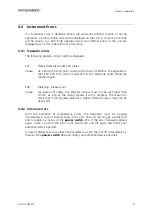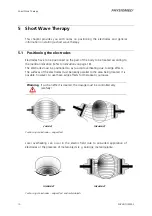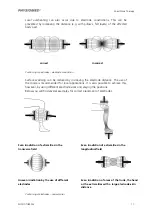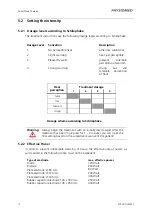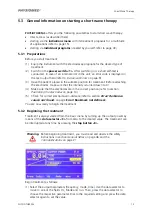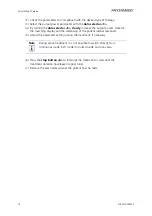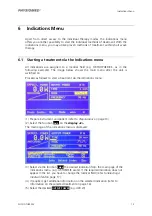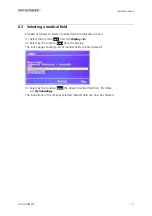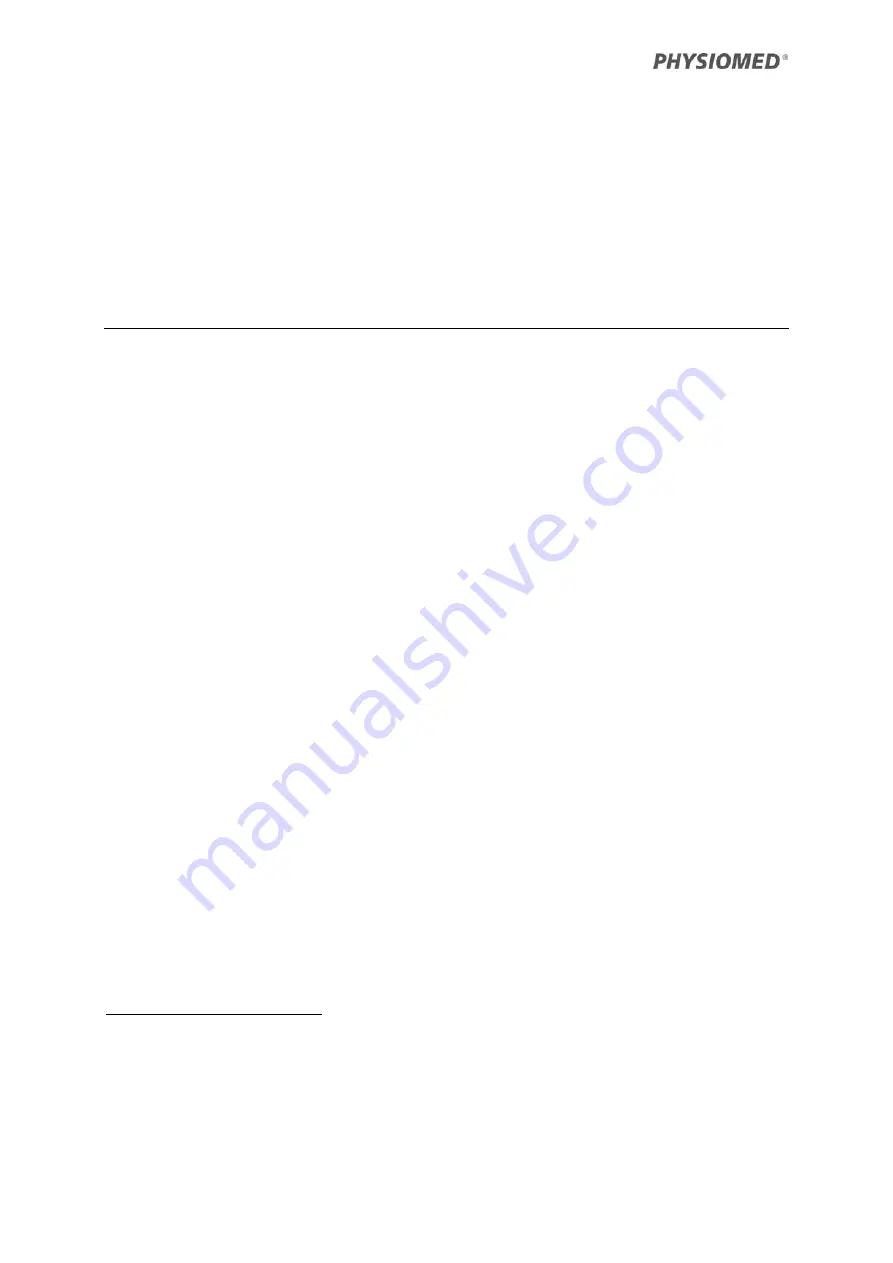
Introduction
2
PHYSIOTHERM-S
The capability of applying the high-frequency energy in short, intense pulses (pulsed
mode) can further increase the depth effectiveness, especially the stimulation of
perfusion, while the heat generation is hardly felt in the skin, which is more sensitive
to heat.
The applications for the high-frequency therapy are diverse. This therapy is especially
effective in treating rheumatic disorders of the joints and muscles, inflammatory
disorders of the respiratory organs, the kidneys and bile ducts and all disorders due
to insufficient perfusion. The pulsed mode is advantageous in the treatment of
acute conditions.
1.3
Contraindications
The following list of contraindications (which is by no means to be regarded as
being comprehensive) should always be observed when applying short-wave
treatment for therapeutic purposes!
•
Always be sure to ask the patient about these contraindications, as not all
contraindications are immediately recognizable by the therapist (e.g.
pregnancy)!
•
In addition, any external signs that might point to the existence of
contraindications (e.g. scars, etc.) should always be reason enough to ask the
patient about contraindications!
•
As a rule, any short-wave therapy must be strictly based on an accurate
diagnosis!
1.3.1
Absolute contraindications
The following indications are
absolute contraindications
to
short-wave therapy:
•
Patients with a cardiac pacemaker may under no circumstances be subjected to
short-wave therapy. The effects of the applied high frequency on the pacemaker
could cause ventricular fibrillation. Any other persons with pacemakers must also
remain outside of the treatment area during the short-wave therapy!
•
Patients whose condition could be negatively affected by heat
•
Patients with tuberculosis
•
Patients with haemorrhages or risk of haemorrhage
•
Patients with septic conditions and emphysemas
•
Patients with malignant tumours and tumours that are not yet identified
1.3.2
Local contraindications
The following indications are
local contraindications
to
short-wave therapy:
•
Implants or metal inclusions
1
According to Schneider (in ELEKTROMEDIZIN 7/62): Tissue and organ sections with inflammations, necroses, pus
formation and abscesses. In such cases, the therapist must choose between the application of cold or heat in accor-
dance with general pathological considerations, depending on the degree of inflammation. Inflammatory conditions
that are still in statu nascendi are treated with cold. Inflammatory conditions with necroses and a cavitary tendency
are treated with therapeutic means that generate heat and hyperemia. Chronic and unspecific inflammations are
treated in the same way (heat and hyperemia), as this supports resorption, reparation and regeneration. Specific
chronic inflammations (such as tuberculosis), however, are activated by heat. Accordingly, they represent a contrain-
dication. The same applies in the case of malignant tumorous conditions. Heat application in the case of a tumorous
disease can only be regarded as malpractice. Moreover, cardiac congestions must be removed prior to any heat appli-
cation.

















